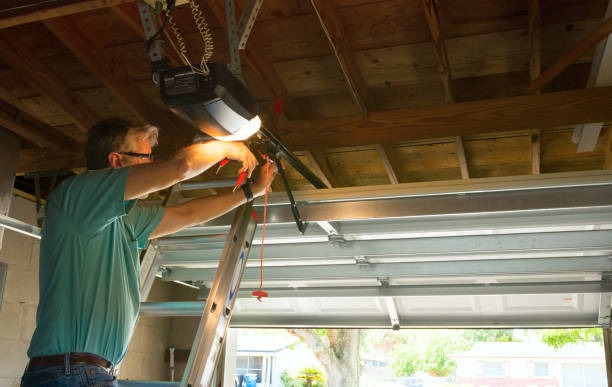Ensuring that custom furniture meets your needs requires careful planning and consideration. Every detail matters, from assessing your space and functionality requirements to selecting suitable materials and craftsmanship. Effective communication with the designer, budgeting wisely, and reviewing design drafts are crucial. By addressing these factors, you can create furniture pieces that are aesthetically pleasing, practical, and tailored to your specific lifestyle and preferences.
Custom furniture offers the advantage of being tailored to your preferences and requirements, but achieving the best results requires attention to detail. Here’s a comprehensive guide to ensuring that your custom furniture meets your needs:
1. Define Your Needs and Preferences
Start by clearly defining what you need from your custom furniture. Consider the following factors:
-
Functionality: Determine how the furniture will be used. For example, is it for a home office, living room, or bedroom? Consider specific functionalities like built-in storage, adjustable features, or ergonomic design.
-
Style: Choose the style and aesthetics that match your space. Consider the existing decor, color schemes, and design preferences. Consider whether you prefer a modern, traditional, rustic, or eclectic style.
-
Space Constraints: Measure the space where the furniture will be placed. Account for dimensions, layout, and architectural features, such as windows, dining tables Victoria Canada, or doors, that impact the design.
2. Set a Budget
Establish a clear budget for your custom furniture project. This will help you make realistic decisions regarding materials, craftsmanship, and design complexity. Be prepared for potential additional costs, such as delivery and installation fees. Discuss your budget with the furniture maker to ensure that your expectations align with what is feasible within your budget.
3. Choose the Right Materials
Selecting appropriate materials is crucial for custom furniture’s functionality and aesthetics. Consider:
-
Durability: Choose materials that will withstand the intended use. For example, hardwoods like oak or maple are often preferred for their durability, while softer woods may be more suitable for less demanding applications.
-
Finish: Decide on the type of finish that suits your style and maintenance preferences. Options include stains, paints, lacquers, and natural finishes. Each has different implications for durability and care.
-
Comfort: If your furniture includes seating, such as a sofa or chair, consider cushioning and upholstery materials that provide comfort and support.
4. Work with a Skilled Craftsman
Find a reputable and skilled furniture maker or designer with custom project experience. Look for recommendations, review their portfolio, and check references. A good craftsman will work closely with you to understand your vision and provide valuable input on design, materials, and construction techniques. For more information on custom furniture, like bookcases, you can see more here.
5. Create Detailed Design Specifications
Work with your designer to develop detailed design specifications. This should include:
-
Drawings and Sketches: Obtain detailed drawings or sketches of the furniture. Ensure that dimensions, proportions, and design elements are represented.
-
Material Samples: Request samples of materials, finishes, and fabrics to ensure they meet your expectations.
-
Functional Details: Specify functional requirements, such as storage compartments, adjustable features, or modular components.
6. Review and Approve Prototypes
Request a prototype or mock-up of your custom furniture. This allows you to assess the design, proportions, and functionality before final production. Review the prototype thoroughly and provide feedback to ensure it aligns with your needs and preferences.
7. Communicate Effectively
Effective communication with your furniture maker is critical to achieving your desired outcome. Be clear and specific about your requirements, preferences, and any concerns. Maintain open lines of communication throughout the design and production process to address any issues promptly.
8. Consider Practical Aspects
Think about practical aspects such as:
-
Maintenance: Consider the ease of maintenance and cleaning for the materials and finishes used. Choose options that fit your lifestyle and maintenance preferences.
-
Delivery and Installation: Plan for the logistics of delivery and installation. Ensure that the furniture can be delivered to your space without issues and will fit through doors, hallways, and staircases.
9. Test for Comfort and Functionality
Once your custom furniture is completed and installed, test it for comfort and functionality. Sit on chairs, lie on sofas, and use adjustable features to ensure they work as intended. Ensure the furniture meets your needs and provides the comfort and usability you anticipated.
10. Request a Warranty or Guarantee
Ask about warranties or guarantees offered by the furniture maker. A warranty can provide peace of mind regarding the quality and durability of the furniture. Ensure you understand the terms and conditions of any warranty or guarantee.
11. Consider Long-Term Usability and Adaptability
Consider how your furniture will fit into your long-term plans and evolving needs. Custom furniture should meet your current requirements and adapt to future changes. For example:
-
Modularity: Consider designs that allow for future adjustments or expansions. Modular furniture can be reconfigured or added to as your needs change.
-
Versatility: Opt for pieces that serve multiple functions. For example, a sofa bed or a coffee table with storage can provide added functionality and flexibility.
-
Timeless Design: Choose a design that will remain aesthetically pleasing over time. Avoid overly trendy styles that may become outdated quickly.
Planning for long-term usability ensures that your custom furniture remains valuable and functional throughout its lifespan, reducing the need for replacements or modifications.
12. Incorporate Sustainability Practices
Incorporating sustainability into your custom furniture project can positively impact the environment. Consider the following:
-
Eco-Friendly Materials: Select materials that are sustainably sourced, such as reclaimed wood or bamboo, which have a lower environmental footprint compared to traditional hardwoods.
-
Non-Toxic Finishes: To ensure healthier indoor air quality, choose finishes and adhesives that are low in volatile organic compounds (VOCs).
-
Local Craftsmanship: Support local artisans and manufacturers in reducing the carbon footprint associated with transportation and supporting the local economy.
By prioritizing sustainability, you contribute to environmental conservation and ensure that your custom furniture aligns with eco-friendly values. You can get more info here on custom furniture makers and their other services.
Wrapping Up
Ensuring your custom furniture meets your needs involves clear communication, careful planning, and collaboration with a skilled craftsman. By defining your requirements, setting a budget, selecting appropriate materials, and working closely with your designer, you can create custom furniture that enhances your space and perfectly fits your functional and aesthetic needs. Attention to detail throughout the process will help you achieve a successful and satisfying custom furniture project.





